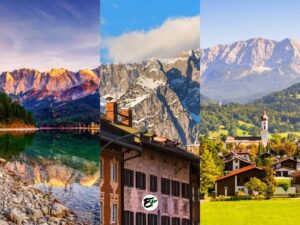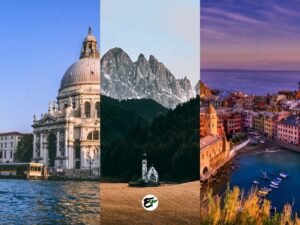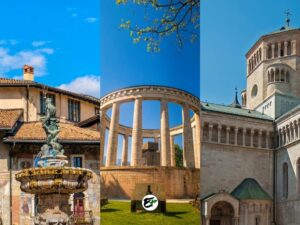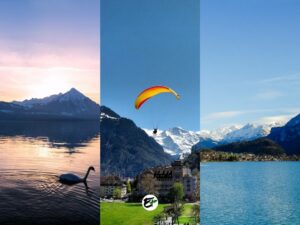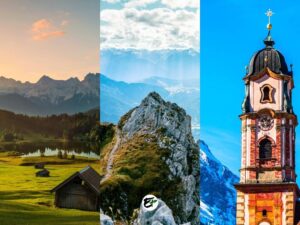A Quick Guide to Visit Sion Switzerland: 5 Best Things to Do
Sion is the capital of the canton of Valais – Switzerland’s south westernmost canton. It’s in the same part of Switzerland as Zermatt, which is home to the Matterhorn – the country’s most iconic peak. Sion is famous for its wines, thanks to the vast vineyards that cover the slopes of the valley.
In my perspective, Sion is a hidden gem for Romanticism travelers like me. It sits at the valley floor of the Swiss Rhone Valley, surrounded by breathtaking scenery. On the hills, you can see the old ruins of churches and castles. Sion can capture the hearts of every Romantic traveler. Don’t believe me? One look at its skyline and you’ll be convinced.
If you like to wander or take dramatic photos, you’ll need a day to explore Sion, even though it’s a small town. It has several spots that invite you to spend some moments exploring your own identity, passions, and inner struggles.
While I’ve introduced Sion as a destination for people who share the same personality, it doesn’t mean that you should avoid it if you’re not a Romantic or a wanderer. Sion’s top attractions and landmarks will show you what makes this town worthwhile.
This post contains affiliate links. I may receive a tiny commission at no additional cost to you.
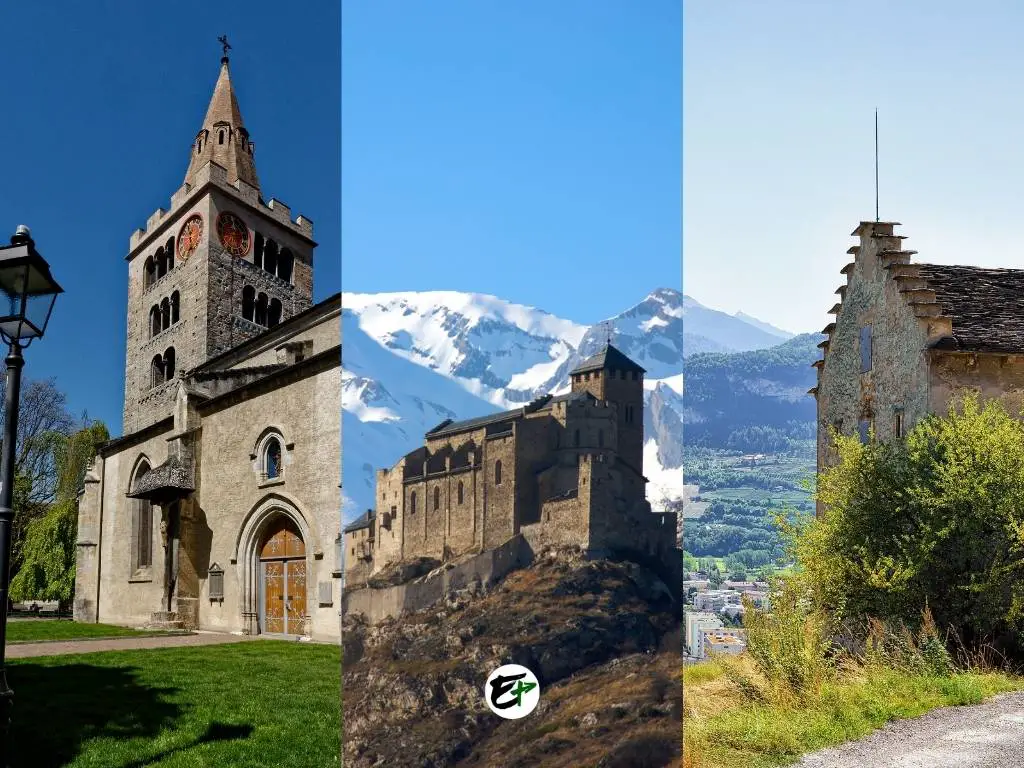
Use the table of contents to skip to topics.
Good to know: If you decide to visit Sion, this article will be your guide to making the most of your visit. I’ll show you the five best things to do in Sion and let you to discover the must-see parts of the city’s attractions. You can find the best hotel deals in Switzerland at this link.
Is Sion Worth Visiting?
If you’re wondering whether to visit Sion, here’s a straightforward answer: Sion is a must for explorers by heart. If you’re a casual traveler, a brief stop in Sion is worthwhile for its stunning views, made dramatic by historical landmarks.
While Sion may not suit everyone, adding it to your Swiss itinerary promises a uniquely memorable trip.
One compelling reason to explore Sion are the remarkable discoveries in this city, such as the world’s oldest playable organ at the hill-perched basilica. Movie buffs dreaming of medieval scenes should also make the trip, with landmarks like the Sorcerer’s Towers bringing fantasies to life and offering a glimpse into intriguing history.

Another way how Sion can make your trip to Switzerland unique is by the wines it offers. You see, Sion’s geography is ideal for viticulture, creating a haven for wine enthusiasts. Why not take a moment to pause in Sion and savor its unique varietal wines crafted from the Chasselas grape?
Consider staying in Sion not only for its experiences but its strategic location.
Sion serves as an ideal home base for exploring the Canton of Valais, granting easy access to Zermatt, charming Alpine villages, and neighboring cities like Montreux. Just a short 45-minute train ride away, Montreux beckons with its connection to Lake Geneva and Chillon Castle, providing additional exploration beyond the canton of Valais.
Best Things to Do in Sion
Sion offers a variety of activities for its visitor.
One option is to visit a local wine cellar, where you can sample the region’s finest vintages. If you’re interested in nature and history, the Valais Nature Museum is must-see.
For a unique experience, consider visiting an underground lake near the city. If you prefer a more relaxed pace, there’s a park with a beautiful lake where you can unwind. For those seeking a bit of excitement, the RealFly recreation center is an excellent choice.
However, to truly understand Sion, there are five key destinations and historical attractions that you should not miss. These places will give you a deeper insight into the city’s character and history.
If you have a whole day to spend in Sion, below is a map from the official website of Sion Tourism office which you can use to explore the town DIY.
Sion Cathedral
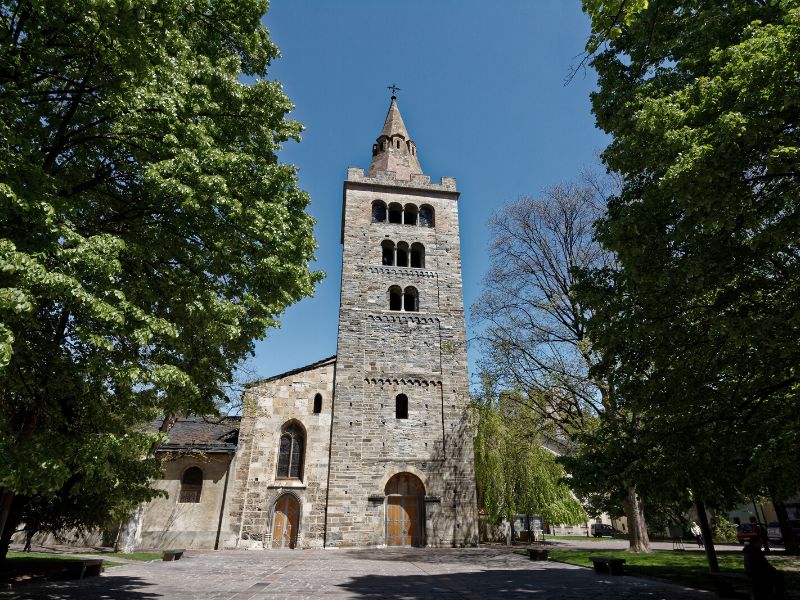
Upon your arrival in Sion, the first place you should visit is the Sion Cathedral. This is not only a place to give thanks for safe travels if you’re a Christian, but it’s also the most accessible tourist attraction in Sion and the easiest to find.
If you’re coming from the Sion train station, the cathedral is just a fifteen-minute walk away. From the station, head north on Avenue de la Gare. After passing Parc de la Planta and before reaching the Tribunal Cantonal Building, turn right onto Rue Mathieu Scheiner street. A few steps later, you’ll arrive at the Sion Cathedral.
The Sion Cathedral, also known as Our Lady of the Glarier (Notre-Dame du Glarier), is a 15th-century Roman Catholic church located in the heart of Sion. This is the second time it has been rebuilt after the destruction of the previous cathedrals on the same site.
When planning a visit to the Sion Cathedral, here are some things you can expect to discover and see:
- A Romanesque bell tower, whose sides and back feature beautiful clocks in gold, black, and red colors.
- Byzantine architecture from the choir and the glass mosaic behind the altar.
- Fifteen beautiful altars, decorated with intriguing Roman inscriptions.
A visit to the Sion Cathedral won’t take long unless you wish to thoroughly study the church’s design or photograph the church from various angles.
If you’re into Europe’s beautiful churches, there are a few you should definitely check out.
First off, there’s the Sainte Chapelle. It’s a gorgeous landmark in Paris that you won’t want to miss. Then in Venice, you’ll find the Saint Mark Basilica. It’s one of the Venice’s most impressive buildings. Over in Florence, the Florence Cathedral is a standout landmark that’s sure to catch your eye. And in Rome, the Saint Peter’s Basilica is one of the city’s most striking places. It’s a must-see on any trip to the city.
Sorcerer’s Tower
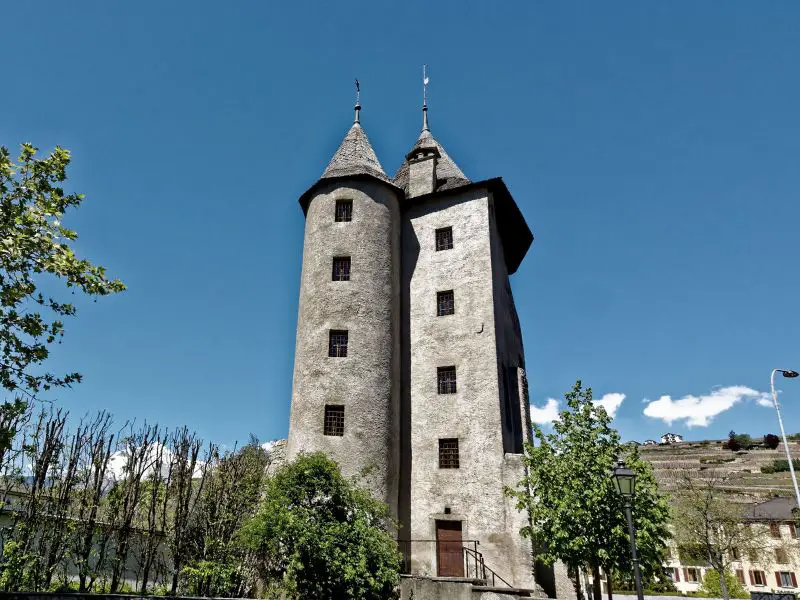
Once you reach Sion Cathedral, you’ll find yourself in close proximity to another noteworthy site—the Sorcerer’s Tower. If you’re inside the cathedral, a brief 3-minute stroll to the northwest will lead you straight to the Sorcerer’s Tower.
Contrary to its name, the Sorcerer’s Tower was not a dwelling for a witch or a sorcerer. Instead, it was constructed in the 14th century to strengthen the defenses of Sion. The addition of the Sorcerer’s Tower provided a new dimension to the town’s pre-existing walls.
In later years, the tower was repurposed as a prison and a venue for witch trials. These trials of the sorcerers, which took place from the 15th to the 18th century, have left a lasting imprint on history. This historical significance led to the site being named the Sorcerer’s Tower.
Today, the tower stands as the main remaining relic of the walls that once encircled Sion’s old town. It is rumored that inside the tower, in the hall of justice, the instruments of strappado torture used to interrogate the convicts are still kept.
Access to the tower may be limited, and the opening hours are not clearly stated on the official website of Sion Tourism. However, visitors are free to admire its imposing exterior at any time. During a visit, one can observe the medieval military architecture of the tower and contemplate the history that unfolded within its walls.
For those intrigued by the tales of torture and horror from the medieval ages, a visit to the enchanting town of Rothenburg ob der Tauber in Southern Germany is a must. This town is home to a museum dedicated to the medieval justice system. The museum houses a collection of preserved tools used for torture and punishment during that era, which are beyond imagination.
Chapelle de Tous-les-Saints

As you climb the hills of Sion, located in the town’s center, the views become increasingly exciting and dramatic. This is particularly evident when you reach the area around Chapelle-Tous-les-Saints, also known as the Chapel of All Saints.
This spot is one of the most frequently captured in photographs throughout Sion. The chapel’s old-world charm, set against the backdrop of snow-covered mountains, makes it easy to see why it’s so popular.
Did you know that Chapelle de Tous-Les-Saints was built in 1325? However, the chapel we see now is only a restored version of the original. This restoration was carried out in 1964. Despite the restoration, it still retains its rustic and quaint appearance.
If you’re currently at the Sion Cathedral, Chapelle de Tous-les-Saints is just an 8-to-10-minute hike away. The chapel is situated along the path towards Valere Basilica. This church is located at the top of one of Sion’s hills.
The route to the chapel is inclined, but it isn’t difficult to hike. The change in elevation from the town center to Chapelle de Tous-Les-Saints is approximately 70 meters.
Upon arriving at Chapelle de Tous-Les-Saints, you will not only see a gothic-style chapel made from bricks with mountains in the backdrop. You will also be able to enjoy an overlooking scenic view of Sion.
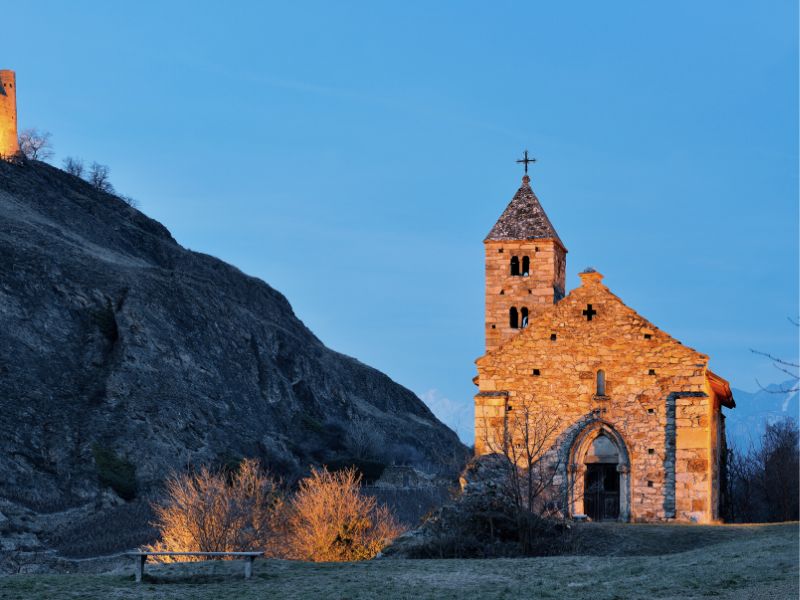
If you’re interested in chapels nestled in idyllic and breathtaking locations, Berchtesgaden in the Bavarian Alps is the place to be. There are 10 viewpoints in Berchtesgaden that offer stunning views, some of them lets you behold its picturesque chapels.
Valere Basilica
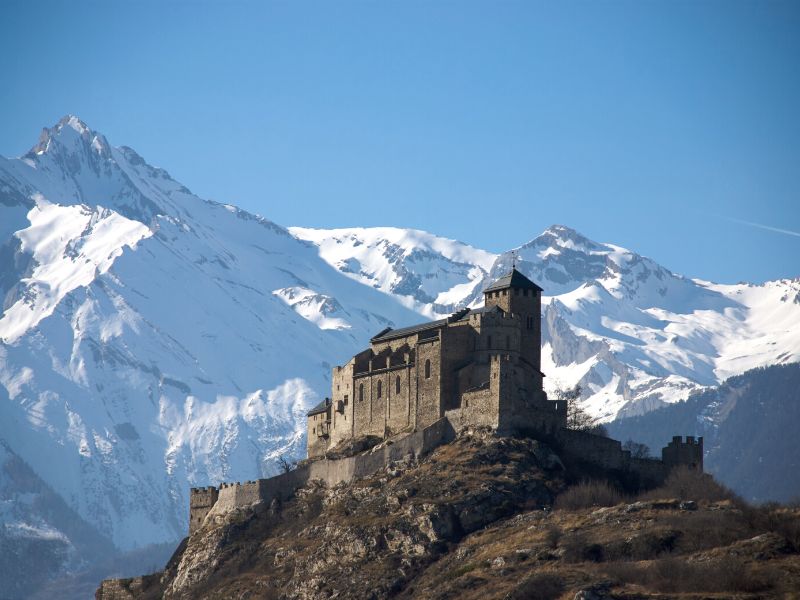
Once you’ve made it to Chapelle de Tous-les-Saints, you’re almost at Valere Basilica, which some people call Valere Castle. To me, this Swiss Heritage Site of National Significance is one of the highlights of visiting Sion. There’s a reason why you must visit this church, especially if you’re the type of traveler looking for notable discoveries.
Why, you ask? Because it is here in Valere Basilica that you can find the oldest playable organ in the world! I wonder about the quality of its materials and the intensity of its preservation. How did it survive the test of time for nearly 600 years?
To give you an idea of the architecture of Valere Basilica, let me share with you its history:
The first building blocks of Valere Basilica stood in the hills of Sion in the 1100s. Improvements continuously happened for centuries after its first phase was completed.
Initially, the Valere Basilica was built with Romanesque-inspired architecture. Throughout its development, its design changed into the Gothic style as it expanded. The improvement of the Valere Basilica continued until the mid-1700s. Paintings, murals, and statues were added, along with the famous organ.
Interestingly, in October 1987, Pope John Paul II visited Valere Basilica. It was only then that this church gained its title as a minor basilica.
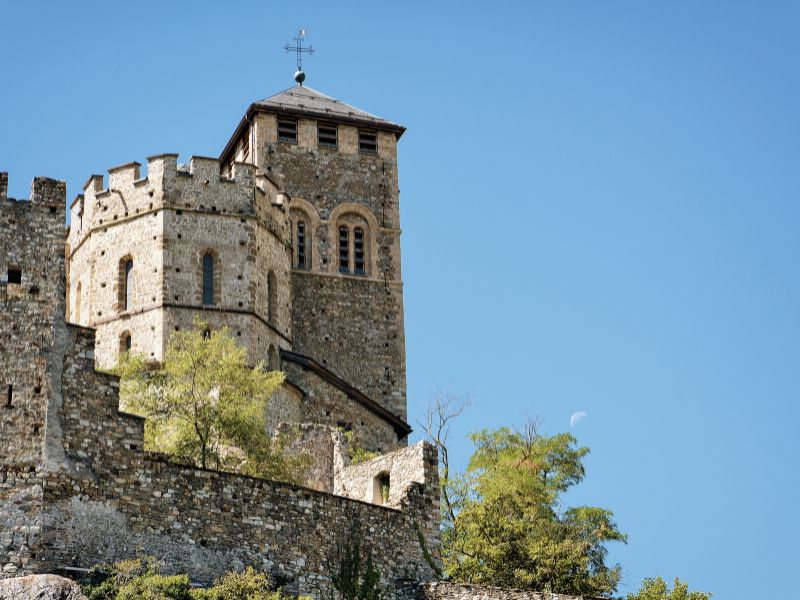
Once you reach Valere Basilica, you will be rewarded with a scenic view of the town of Sion. You will also see the Tourbillon Castle perched on top of another hill in Sion. The basilica offers an unobstructed view of the castle, so don’t miss the opportunity to photograph it during your visit to Sion.
When you visit the basilica, don’t forget to enter, especially since the entrance is free. Inside, you can see the oldest playable organ and murals that transport you back in time.

Here’s a tip: If you want to discover the history of the canton of Valais, you may visit the Valais History Museum. It’s situated adjacent to the basilica. For the latest information about Valere Basilica and the history museum, please check the official website of Sion.
Tourbillon Castle
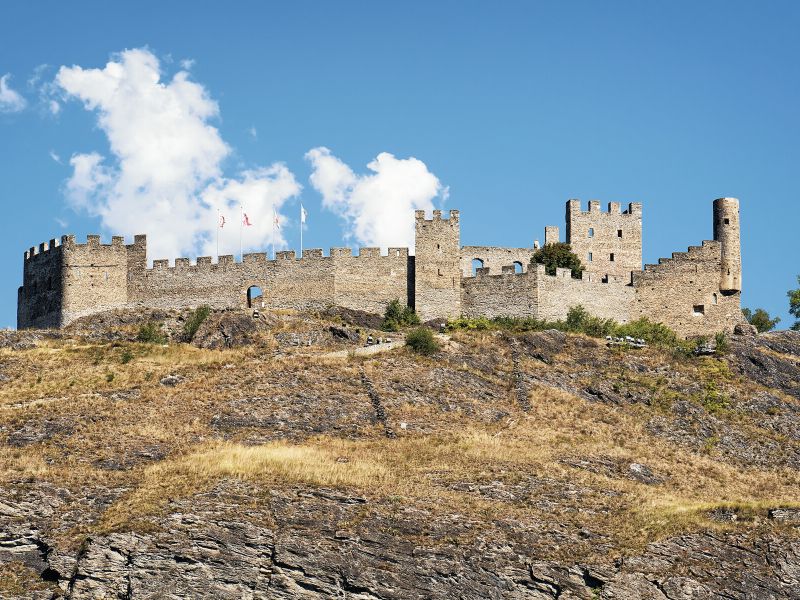
Another beautiful highlight in Sion is the Tourbillon Castle. Although the castle is now in ruins, unlike the intact Valere Basilica, it is also recognized as a Swiss Heritage Site of National Significance.
To me, this castle, rich in history, serves best as a place to take awesome photos in Sion. Located approximately 180 meters higher than the town, it offers a bird’s eye view of the town and an unobstructed view of Valere Basilica. If you’re planning to visit Sion and wondering where to watch the sunset, the castle grounds of Tourbillon Castle are definitely a fantastic option.
To make your visit more interesting, it’s beneficial to know even a little portion of its history. By understanding its history, you can imagine the scenes that the ruins may have once depicted.
The story of Tourbillon Castle began in the 13th century. Bishop Boniface de Challant, a native of Savoy, ordered the construction of his new residence on a hill near Sion. From that point forward, it served as the residence for all bishops assigned to Sion.
Fast forward to 1417, the people of Sion and the bishop found themselves in “grave” conflicts. The conflict between the two sides was so severe that it resulted in the people burning the Tourbillon Castle.
Although the Tourbillon Castle did not remain in rubble for more than three decades after that incident, another fire in 1788 occurred. This fire completely destroyed the castle. Since then, it has remained in ruins.
It was only in the 19th century when reinforcements were made to the Tourbillon Castle to preserve it as a historical monument.
When you visit, there are several things that you can expect to see. Below is a map of the Tourbillon Castle to give you an idea of the different parts of the castle.

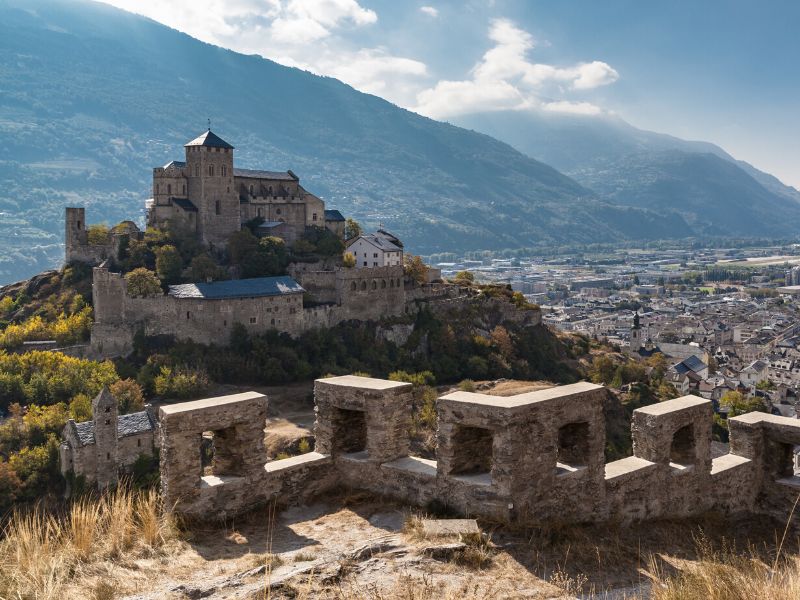
Below is the summary of what I discovered in Tourbillon Castle.
- Tourbillon Castle is composed of various sections. Upon arrival at the entrance, the first things you will see are the two towers guarding the entrance.
- If you move east immediately after entering the castle, you will arrive at the castle’s chapel. This chapel is connected to the sacristy, where the articles of worship are stored.
- Inside the chapel, you can find faded murals that narrate the story of Jesus and other Christian beliefs. After exploring the chapel and sacristy, you can move northwards to see what’s inside the main palace, cistern, and keep.
- While exploring the castle, you can directly spot Valere Basilica. The windows facing south frame the view of the basilica – don’t forget to capture it!
- Outside, to the east, you will find the castle’s courtyard. This is the perfect spot to view the plains and fields of Sion.

Tips in Visiting Sion
If you’re still in the planning stages of a trip to Sion and Switzerland, there are a few things to keep in mind to ensure a rewarding experience. We’ll discuss these considerations in more detail in this section.
When Should I Visit Sion
As a general rule, summer is the best time to visit Sion.
Typically, Sion has the best weather during the summer. This makes it an ideal time to explore Sion and its outdoor attractions, such as the Tourbillon Castle and Old Town Sion. The views and highlights of Sion are more appealing in the summer. The blue sky and abundant sunlight make the scenery less gloomy than on cloudy days.
Also, during this season, the days are longer, giving you plenty of time to explore the town.
How to Get to Sion
Sion, as the capital of the canton of Valais, is well connected to the train networks of Switzerland. It’s quite convenient to get to Sion from anywhere in Switzerland, even without a car.
If you’re flying into Switzerland and Sion is your destination, you can start your journey from cities with airports such as Zurich, Geneva, Bern, or Basel.
However, if Sion is your first stop, it’s often best to start from Geneva. From Geneva, there’s a direct train to Sion. This train journey takes just two hours.
How Long to Stay in Sion
The duration of your stay in Sion largely depends on the activities you wish to undertake. Typically, a single day is sufficient to leisurely explore the highlights. This includes a tour of Sion Old Town, visits to the attractions on the city’s two hills (Tourbillon Castle and Valere Basilica), and participation in a wine tasting tour.
If you’re thinking of making Sion your home base for checking out the canton of Valais, or if you’re interested in seeing more of Sion than just the main sights, you might need more than two days.
But if you plan to see different parts of Switzerland, one day in Sion should be enough. You know, when it comes to creating memorable experiences in Switzerland, it’s often more rewarding to spend more time in destinations that offer unique attractions and spectacular scenery. Examples of such places include Lucerne and the Jungfrau Region, which encompasses Interlaken, Lauterbrunnen, and Grindelwald.
You can find the best hotel deals in Sion here.
Day Trips from Sion
Sion may be located in the southwestern corner of Switzerland, but it’s the largest city near some of Switzerland’s top attractions. From Sion, you can take day trips to these destinations without spending too much time on the road or in transit.
As mentioned earlier, Zermatt is one of these destinations. It’s just 2 hours away from Sion. This village offers some of the best views of the Matterhorn, Switzerland’s most iconic mountain.
Kandersteg is another beautiful alpine village you can visit from Sion. This village, nestled just 1.5 hours away from Sion by train, is the gateway to Oeschinensee, one of the most beautiful high-altitude lakes in Switzerland.
If you’re looking for a different city experience, Montreux is the place to be. This town, nestled between the Swiss Alps and Lake Geneva, is one of the most beautiful alpine cities in Switzerland, similar to Lucerne and Thun. From here, you can visit Chillon Castle, a castle by the lake, and Lavaux Vineyard, a UNESCO Heritage site. Montreux is just a 45-minute train ride from Sion.
Brig is another city near the Swiss Alps that you can visit from Sion. It’s also a 45-minute train ride away from Sion. Here, you can visit a castle with a lesser-known history about a wealthy merchant. Visiting Brig, like Sion, can make a trip to Switzerland unique.
Aside from everything I’ve mentioned, you can also take day trips to other beautiful villages in the Swiss Alps. From these villages, extraordinary sights await, like the Aletsch and Rhone Glaciers. Furka Pass and other scenic passes are also within reach from these villages.
Where to Next After Sion
Even after visiting Sion and the Swiss Alps, there are several other fantastic destinations in Switzerland. These are the country’s major cities, and they’re amazing places to experience a mix of culture and history.
One of them is Geneva. This city, located on the French side of Switzerland, offers experiences beyond the usual. It’s home to international organizations and museums that can satisfy any curious mind. Some people might say Geneva isn’t worth visiting, but there are several reasons that make Geneva a must-see.
For a change of scenery, Zurich is a must-visit city. It offers a cosmopolitan feel, high-end shopping, and an epic nightlife. As the largest city in Switzerland, Zurich has a lake, beautiful landmarks, and amazing festivals.
If you’re someone who enjoys wandering in picturesque streets, the historic old city of Bern is the best place to go after Sion. As the capital of Switzerland, Bern is home to spectacular landmarks and the country’s most impressive architectural attractions. There’s so much to do in Bern that you could spend three days exploring the city and its museums.
Lastly, if you’re planning to visit the fairytale towns of Colmar or Strasbourg in eastern France after exploring Switzerland, you should include Basel in your itinerary. Basel is a city with beautiful attractions that blend the old and the new. From Basel, you can also visit the Black Forest in Southern Germany.
Save it on Pinterest.




